How to select the practical calibration parameters of coffee grinder and common bean grinder
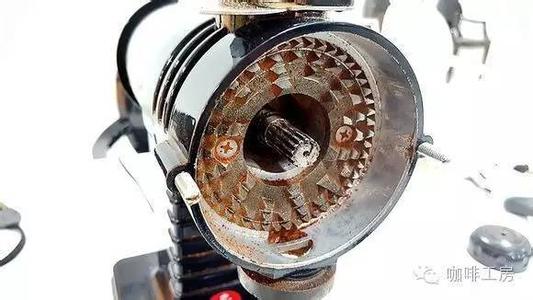
Choose the appropriate grinding plate according to the conditions and needs of guests. There is no 100% authoritative regulation in the coffee industry. Diversification is the origin of the world. Since many people are struggling with bean grinders, here are some practical information.
1. The grinding standard is the same, but the flavor is different.
The core grinding plate of the bean grinder is mainly divided into cone grinding plate, flat grinding plate, ghost tooth grinding plate, which of the three different grinding plates is better? For the same beans, the taste of the coffee entrance is different when the grinding degree of the bean grinder with three different plates is basically the same. Although the main flavor is the same, but the details of the structure is very different! Why?
two。 The structure of powder particles determines the flavor
After grinding, the structure of powder particles is completely different, cone grinding plate, flat grinding plate, ghost tooth grinding plate. Through grinding, it can be observed that the powder structure and shape of different knife shapes are completely different. The effect of powder structure on the flavor of coffee is also related to whether the extraction is uniform or not, which has little to do with the extraction rate. Even if the extraction rate is the same, the flavor is still different, which is due to the uneven extraction.
Bean grinders can be divided into three categories: flat knife, conical knife and ghost teeth.
Flat knife: coffee beans are ground into particles by cutting, so its shape is mainly flaky.
Cone knife: the coffee bean is ground into particles by grinding, so its shape is mainly block.
Ghost teeth: coffee beans are ground into particles in the way of grinding, so their shape is mainly close to circle.
Advantages and disadvantages of flat knives:

The flat knife bean grinder is composed of two upper and lower cutter heads, and the base is fixed on the motor. When the motor starts, it rotates the upper and lower cutter heads to produce cutting action.
When the coffee particles fall from the middle, the knife head rotating at the bottom will spin the coffee beans to the outside and push the coffee beans into the tooth cutter part for grinding.
The upper and lower cutters of the flat knife are placed in a parallel manner, so the coffee beans need to rely on the rotating force of the bottom cutterhead to push the coffee beans into the cutterhead, so the weight of the coffee beans placed on the top will affect the uniformity of the coffee beans entering the knife cutter. in addition, due to pushing, the number of collisions between coffee beans increases, resulting in an increase in the proportion of fine powder. This is the reason why the particle uniformity of the common flat knife bean grinder is slightly worse and the fine powder is more. However, the coffee particles ground by the flat knife are flaky, and the flake can increase the area of the cell wall, so using the flat knife can increase the concentration and extraction rate of coffee in a short time, so that the aroma of coffee can be significantly improved in a short time. At the same time, because the shape is long and the volume is smaller, when the extraction time becomes longer, the granular xylem will absorb too much water, resulting in increased miscellaneous flavor and astringent taste.
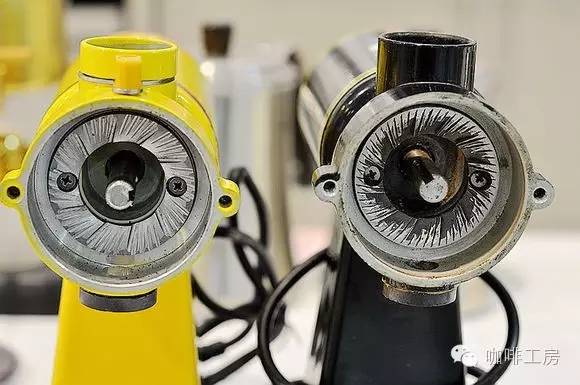
(left round blade, right flat knife)
Advantages and disadvantages of round knife:
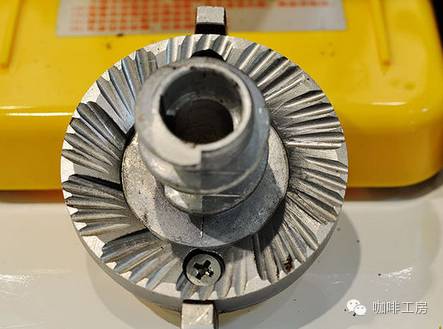
The tooth pattern of the round-edge cutter head is relatively large, the tooth pattern is conical, and the cutting and crushing account for a relatively average proportion. In terms of the feeling of use, the speed of the round blade is obviously faster than that of the flat knife, the flake and fine powder are less, and the whole is more uniform.
Advantages and disadvantages of cone knife:
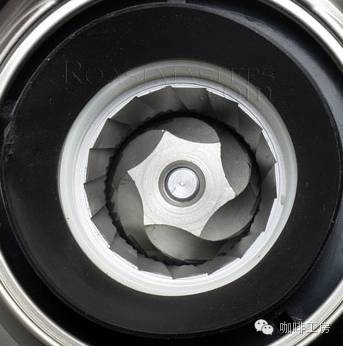
The conical knife grinder places a conical cutter head at the bottom, and then grinds it with the outer ring cutter head. After the coffee bean falls from above, it will pull the coffee bean down with the rotation of the conical cutter head, and then produce grinding action. Because of the relationship from top to bottom, the particles can push the coffee out without pushing. Compared with the peace knife grinder, the number of collisions between the particles will be reduced a lot. Therefore, the proportion of fine powder produced by the cone knife will be much less than that of the flat knife, and the uniformity of coffee grinding will be greatly improved. The cone knife grinding particles will be nearly granular, resulting in a longer water absorption path of coffee particles, and it will take longer for the interior to come into contact with water, so the cone knife particles will release less soluble matter at the initial stage, resulting in a low concentration in a short period of time. At the same time, because the shape is granular, even if extracted for a longer time, the xylem absorbs less water and is less likely to produce miscellaneous and astringent taste.
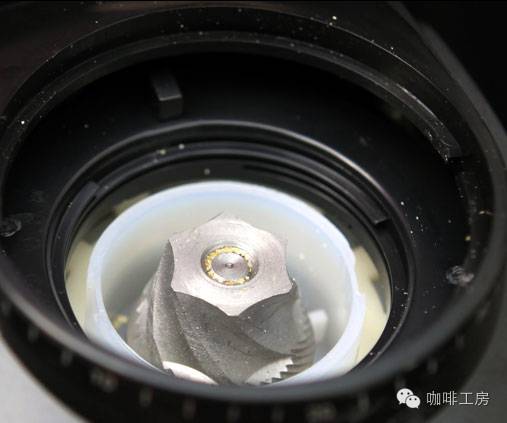
Advantages and disadvantages of ghost tooth grinding plate:
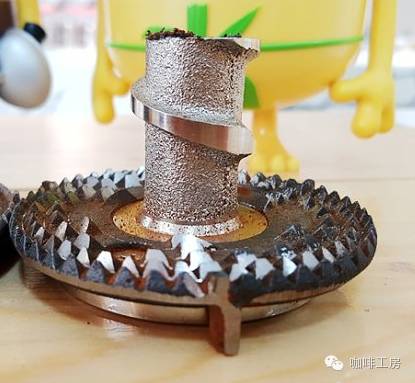
The ghost tooth grinding plate can grind more uniform coffee powder, produce less fine powder at the same time, and has higher grinding efficiency. The coffee powder particles of ghost tooth grinding are close to round, and the proportion of coarse powder and fine powder is more uniform, so the coffee taste is cleaner, the flavor is more three-dimensional and full, but the machine price is higher.

Grinding comparison:
It is a common way to adjust to the same scale, such as scale 4, grind the same beans, and then observe the uniformity and powder thickness with the naked eye, but the cutter head design is different, the powder state under the same scale may not be the same.
Grinding effect diagram of positive sloshing flat knife bean grinder
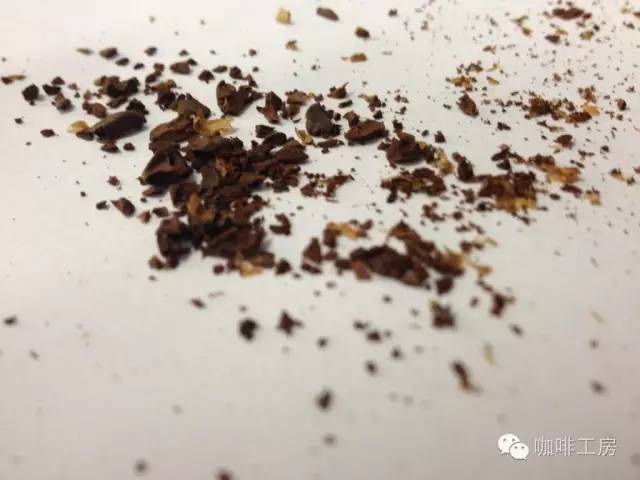
The grinding effect of the round knife of the little flying eagle:
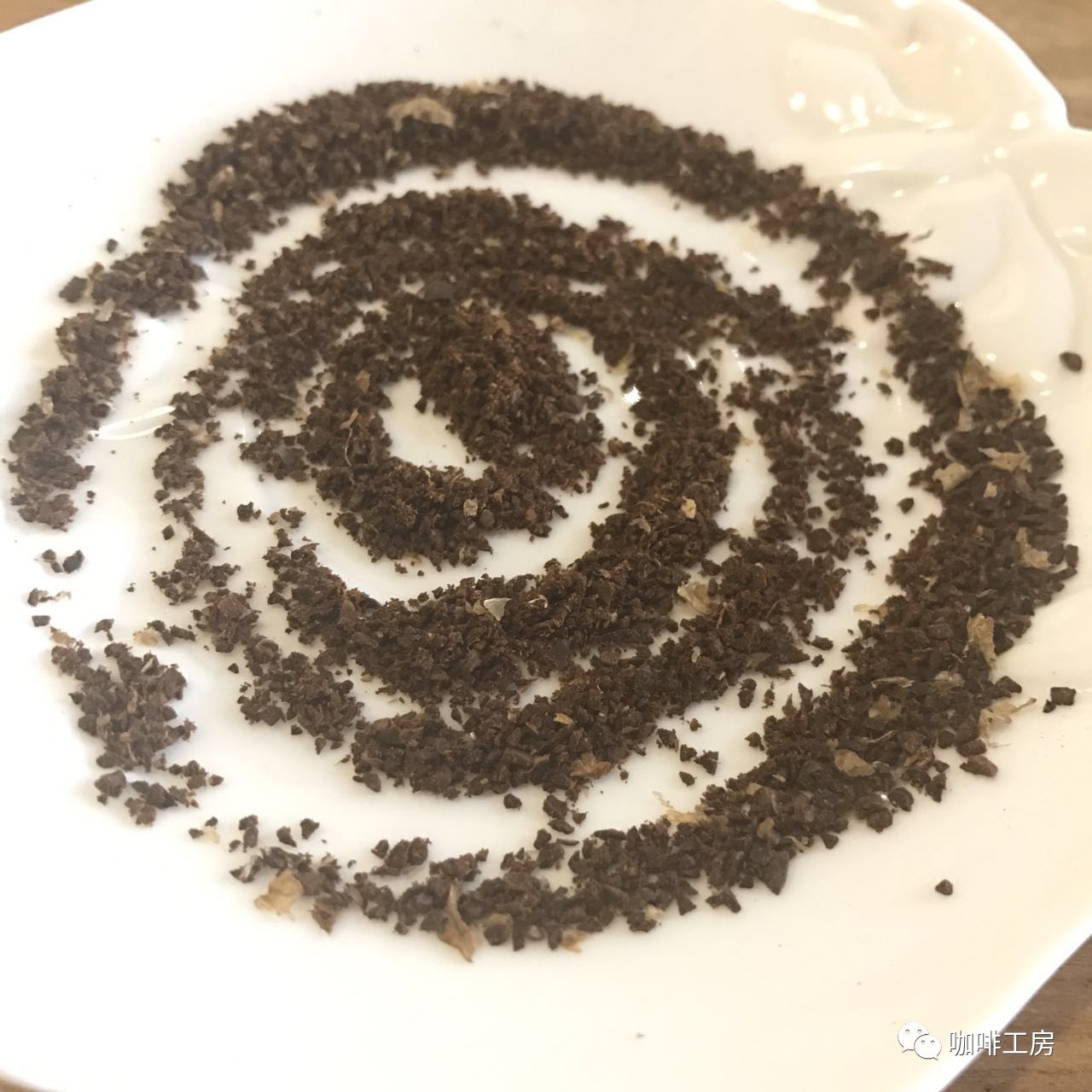
Fuji Royal Rmur220 Japanese Royal Fuji Ghost Tooth Grinder:
Fuji Royal Rmur220 Japanese Royal Fuji Ghost Tooth Grinder, commonly known as Little Fuji. Keywords: "ghost teeth", "uniform grinding", "fast grinding speed", "low noise in motor operation", "good workmanship", "many cafes and enthusiasts are in use", "professional entry first choice", "low price".

So what is the effect of powder structure on extraction?
Flat knife grinding flake particles will be closer to the oblate rectangle, while cone knife grinding block is close to hexagonal, ghost tooth grinding powder waist slender, relatively smooth, the coupling between powder and powder will be better.
The powder grinded by the knife is less than the raised fulcrum of the cone knife, the particles are lumpy, and the waist is stronger than the ghost teeth. A person thinks that the water resistance of flat knife powder should be the greatest!
Cone knife powder under the microscope, the main body of the powder structure will have many protruding outer fulcrum, just like a hedgehog. After many powder particles gather, it is impossible for the powder particles to match completely because of the external fulcrum. The gap will be larger and the flow of water will pass faster. The flow of water passes faster, so the extraction is relatively low.
Ghost tooth powder, ghost tooth grinding out of the powder waist slender, relatively smooth, the coupling between powder and powder will be better. The gap is also small, the flow of water through will be relatively slow, and the extraction will be relatively more. Ghost tooth powder waist is too thin, peace knife powder compared to the resistance must be less. Then the powder ground by the flat knife, from the structural point of view, the convex fulcrum of the powder particles is less, so the coupling is much better than the cone knife powder. The gap is tighter than the cone knife, the water resistance is also larger, and the extraction is also a little more.
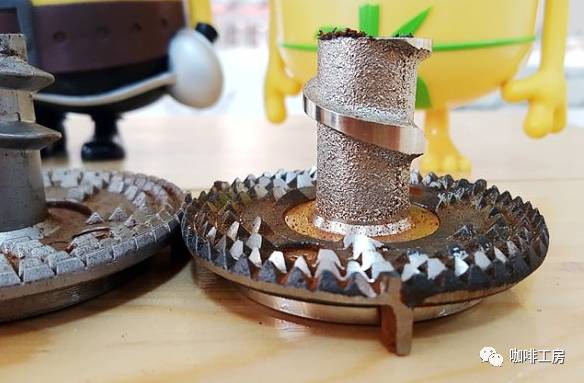
In terms of taste, the same beans, the same amount of powder, the same water temperature, the same fineness of powder, flavor comparison:
The flavor of flat Dao is unrestrained and unitary.
The flavor of conical knife is more round and complex.
The flavor of ghost teeth is clean, and the flavor is three-dimensional and full.

Summary:
From the grinding point of view, is the more uniform, the less fine powder is better? This is not the case. As mentioned just now, each kind of knife head has its own advantages and disadvantages. If it is absolutely uniform and there is no fine powder at all, the taste of coffee will be very mediocre, lack of taste and hierarchy, and it is very easy to extract too much. If too much non-uniform fine powder will produce too much miscellaneous smell and affect the smoothness of the extraction, the taste and smoothness will also be greatly reduced. If you really want to know which one is most suitable for your needs, that's why players and contestants buy so many bean grinders, ah, you can only know by comparing them, and there are experienced baristas who adjust the time and method of brewing coffee. And the degree of grinding to control the flavor of coffee, this will still not make the coffee perfect, so even world-class baristas are constantly pursuing high-end equipment. Constantly improve their own techniques.
When you need to get a high concentration of coffee in a short time, the flat knife grinder is a good choice, and the high concentration will also make the aroma rich, so the aroma of using a flat knife will be much more obvious than that of a cone knife.
When better taste is needed, the granular coffee powder produced by the cone knife can reduce the xylem contact time, although the aroma is not as obvious as the flat knife, but even if the extraction time is prolonged, the taste is still better.
When the overall taste is three-dimensional and full, choose the ghost tooth grinding plate to taste better.

The brand of the mill is different, and the thickness of the powder from the same scale identified by each brand is different, which can only be adjusted from your cooking method. At the same cooking temperature, the powder is thicker, the extraction time can be longer, the powder is finer, and the extraction time can be shorter. It is more common for electric power to be swayed by the common little flying eagle and flying horse, the siphon pot is generally 3 degrees, the hand punch is 3.5-4.5 degrees (depending on the thickness of the powder), the pressure is 4.5-5 degrees, and the mocha pot is 2 degrees.
Bean grinder calibration parameters reference:
Practical parameters of small Fuji scale:
# 4.5 (suitable for light taste or reducing the bitterness of deep-baked bean coke)
# 3.5 roast 4 (moderate shade, suitable for light baking, medium baking or medium deep baking)
# 3 (suitable for heavy taste, but not for deep-baked beans)
Practical parameters of Little Eagle scale:
# 4 (suitable for light taste or reducing the bitterness of deep-baked bean coke)
# 3 roast 3.5 (moderate shade, suitable for light baking, medium baking or medium deep baking)
# 2.5 (suitable for heavy taste, but not for deep-baked beans)
Positive sloshing m520a practical parameters:
# 4 (suitable for light taste or reducing the bitterness of deep-baked bean coke)
# 3 roast 3.5 (moderate shade, suitable for light baking, medium baking or medium deep baking)
# 2.5 (suitable for heavy taste, but not for deep-baked beans)
Domestic small Fuji "small steel gun" practical parameters:
# 4.5 (suitable for light taste or reducing the bitterness of deep-baked bean coke)
# 3.5 roast 4 (moderate shade, suitable for light baking, medium baking or medium deep baking)
# 2.5 consumption 3 (suitable for heavy taste, but not for deep-baked beans)
The smaller the bean grinder is, the finer the grinding is, and the thicker the coffee is. As far as the Xiaofei bean grinder, which is the most commonly used by hand, the scale # 3.5 is the most suitable for hand flushing. If it is further thickened to the scale # 4, it can also be used to flush heavy roasted beans or shallow roasted coffee beans by hand. But the extraction rate is too low, there should be insufficient extraction, taste is too thin heart preparation.
Hand flushing with scale # 3 is the safest and is suitable for light, medium and deep baked popular tastes, but deep baked beans may be too bitter if they are washed by hand with a scale of # 3. If you adjust the fine half degree to # 2.5, the extraction rate will be about 0.5%-1.5% higher than # 3, the amplitude is very large, the room for tolerance for mistakes becomes smaller, the water temperature is too high or the extraction time is too long, and it is easy to flush out bad coffee with a slight error.
However, some heavy-tasting veterans like to make light-roasted, medium-roasted and medium-deep-roasted coffee with a hand of # 2.5, because the sense of stickiness and smoothness is better than that of # 3, but the aftertaste is very far away, but the risk of throat biting is also greatly increased. Deep-baked baked beans entering the second explosion intensive stage had better not be washed by hand with # 2.5, and the failure rate is very high.
The extraction rate of coffee with deeper roasting degree is higher, which should be restrained by rougher grinding. On the contrary, lightly roasted coffee has a lower extraction rate and should be ground slightly, but unless you are eosinophilic, if you wait on shallow roasted Geisha Panama or Kenya at scale # 2.5, it is easy to extract more solute, acid to pout, it is recommended to adjust a little thicker to # 3.5 to inhibit acid dissolution. Thickness of kneading, in addition to looking at the baking degree, it is more important to understand their preference for the origin of beans, it is difficult to have a universal grinding degree. (reference source: Sunvirtue Riyuteh Coffee)
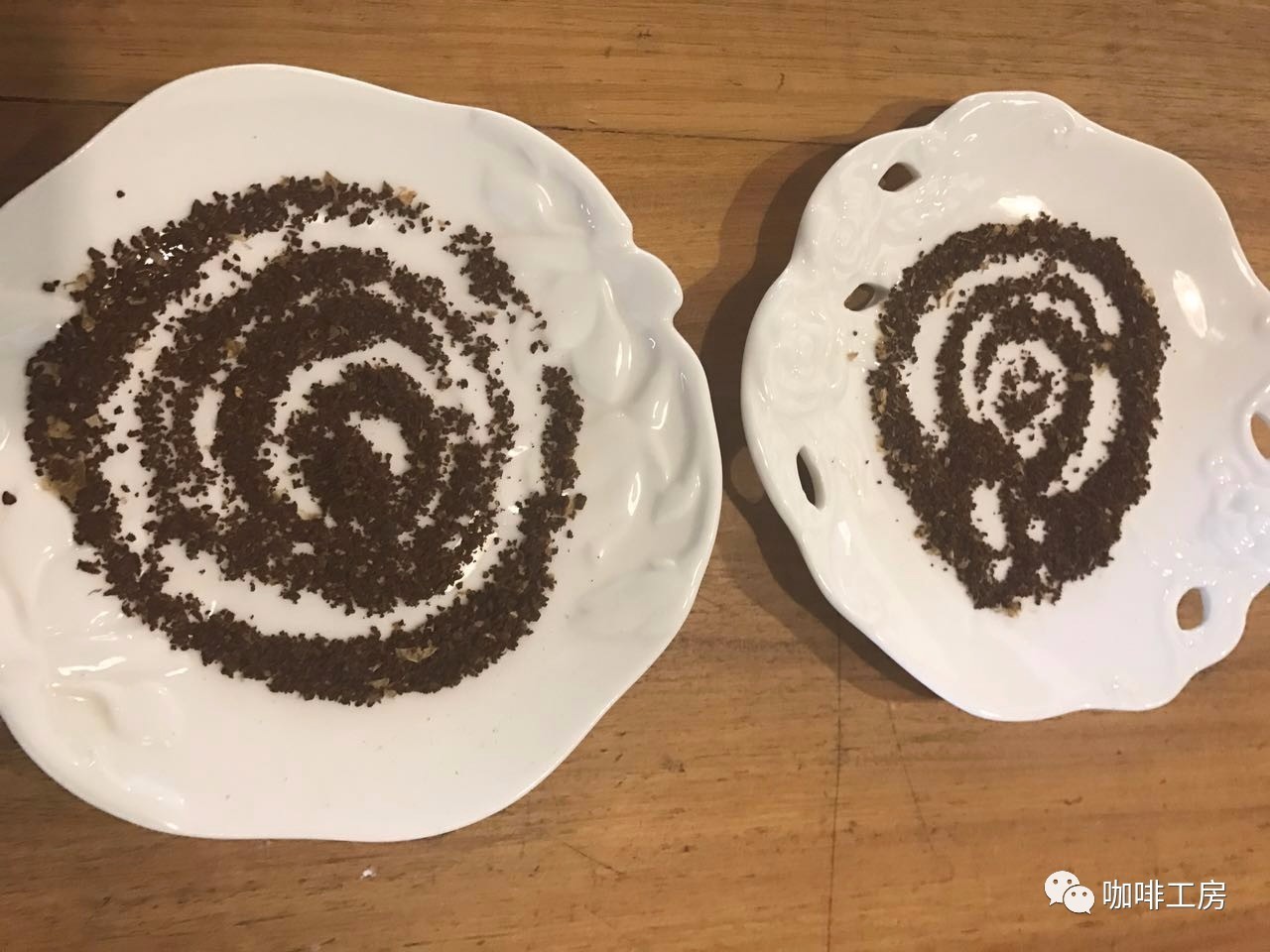
The thickness of a single product is a variable, and everyone uses it differently. Not only is the scale different caused by different machines, but also the extraction method affects it.
For example, hand punch, scale is a variable, speed, technique, temperature, bean baking degree, these are all variables, as long as I am different from one of you, the scale is meaningless, the result is different.
You can judge it this way, for example, if you flush it by hand, the recommended medium scale is as thick as sugar, and if you rush out with obvious astringency or excessive extraction, it may be finer or slower, you can try to make it thicker, but because there are too many variables, you can only move one variable at a time, that is, you adjust the technique, the speed of water injection, the number of circles, and the size of the water column. Powder thickness, temperature and other variables, but can only change one, if it is more obvious miscellaneous bitterness, you can first consider the powder thickness.

Important Notice :
前街咖啡 FrontStreet Coffee has moved to new addredd:
FrontStreet Coffee Address: 315,Donghua East Road,GuangZhou
Tel:020 38364473
- Prev
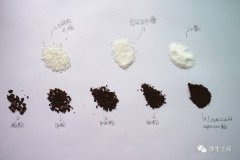
A picture lets you figure out the difference between the thickness of coffee powder and the grinding degree of mocha pot and hand-brewed coffee.
The thickness of coffee powder is related to the amount and speed of coffee ingredients released when brewing coffee. Generally speaking, the thickness of coffee powder can be divided into: coarse powder, medium powder, medium powder, fine powder, very fine powder, five grades, is a little dizzy, ha, it doesn't matter! As soon as you look at the comparison picture and the reference, you can instantly understand the details.
- Next

Can I use a single bean to make Espresso?
With regard to the question of the topic, I can tell you clearly: yes. First of all, let's review the definition of single coffee: single coffee is made from a single coffee bean produced in the country of origin, and it is usually consumed without milk or sugar. What is the scope of a single origin? There is no unified standard in the world. From the common names of some items.
Related
- What is the Philharmonic pressure? How to use Philharmonic pressure to make delicious coffee
- Why does a hand grinder have more fine powder than an electric grinder?
- In addition to the hot mom, what is the difference between the versions of EK43 | ditting and Mahdi ek43?
- What kind of equipment do you need to make coffee by hand? Introduction to novice starter cooking equipment tools
- Espresso needs to be ground how thick and thin scale entry Italian Coffee Machine Bean Grinder investigation and Grinding course
- How much does it cost to open a small private cafe? How much does it cost to learn coffee? How to operate it?
- The difference between the flavor characteristics of hand-brewed coffee and coffee maker is hand-brewed coffee really better than coffee maker? Can I use a coffee machine to make coffee beans by hand?
- The difference between 01 and 02 of hario v60 filter cup what is the difference between 01 and 02 filter cup opening and cooking flavor
- What's the difference between the smart cup and the French kettle? Which is better, the French kettle or the Smart Cup?
- What's the difference between a smart cup and a V60 filter cup? The difference between the taste of smart cup and hand-brewed coffee

